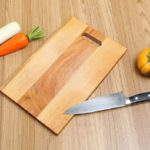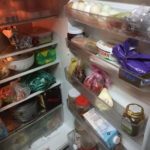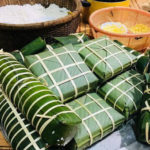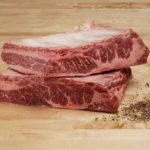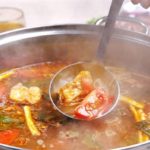Vacuum flasks are designed to keep beverages or food at their optimal temperature for hours. They typically have a triple-layered construction: an inner flask, a vacuum-sealed layer, and an outer shell. The inner flask and vacuum layer are crucial for heat retention and beverage quality.

1. Choosing a Safe and Effective Flask
As the flask comes into direct contact with your food and beverages, it is essential to choose one made of safe materials. There are three crucial components to consider:

• Metal Inner Flask
The most common material for the inner flask is stainless steel 304, also known as 18/8, indicating it contains 18% chromium and 8% nickel. Metal inner flasks are popular for their excellent heat retention, resistance to rust, and absence of toxins that could leach into your food or drinks.

However, metal inner flasks also have some drawbacks:
– They don’t retain the flavor of beverages.
– The flask can crack or break if subjected to strong impacts.
– Beverages may increase in temperature if the flask is placed in a hot environment.
• Flask Lid
To prevent leaks, opt for a flask with a screw-on lid. Look for a lid with a silicone gasket that tightly seals the neck of the flask. This gasket can be removed for cleaning but avoid washing it with hot water as it may deform.
• Outer Shell
The two most common materials for the outer shell are plastic and stainless steel. Plastic reduces the overall weight of the flask but may not offer the same level of durability, corrosion resistance, and sturdiness as stainless steel.

2. Considering Capacity and Suitable Contents
• Capacity
Always leave a small air gap between the liquid and the lid, as recommended by manufacturers. This gap slows down heat transfer and prevents condensation on the outer shell, whether you’re carrying hot or cold drinks.
• Avoid Storing Dairy, Fruit Juices, and Carbonated Drinks for Extended Periods
According to PGS. TS Le Thu Quy, acidic and salty drinks, such as orange, lemon, apple juices, and carbonated beverages, can react with metal components and pose health risks. Therefore, it is best to avoid storing them in vacuum flasks for long periods.

Milk is also sensitive to temperature and the environment, prone to spoilage, and should not be stored in flasks that are not sterilized.
3. Avoiding Sudden Temperature Changes
Subjecting your flask to sudden temperature changes can cause continuous expansion and contraction, reducing its lifespan. Allow at least 15 minutes to adjust when switching between hot and cold contents.

For this reason, it is not advisable to place your flask in the refrigerator, car trunk, or microwave.
4. Cleaning Your Flask After Each Use
To prevent odors and make cleaning easier, wash your flask daily using the following solutions:
• Baby Bottle Cleaning Solution
Use a soft brush to clean the flask with baby bottle cleaning solution, ensuring no chemical residue is left behind.
• Baking Soda
Mix a teaspoon of baking soda with warm water and soak the flask with the lid open. Then, rinse it thoroughly with warm water.

• Vinegar
Add a few drops of vinegar to warm water and soak the flask with the lid open for about 30 minutes. Afterward, rinse it with a soft sponge.
• Warm Water Soak
Pour warm water into the flask without the lid for about 10 minutes. Avoid soaking the flask in water for extended periods, such as overnight.
Note: Avoid using abrasive materials like steel wool or strong chemical cleaners, as these can diminish the flask’s heat retention capabilities.
If your flask sustains a strong impact and becomes dented, it is best to replace it. The inner flask may have deformed, which could be dangerous when containing hot beverages or quickly melting ice with cold drinks.
Source: Phap Luat va Ban Doc (Law and Readers)
8 Common Mistakes People Make with Cutting Boards
Are you using your cutting board correctly? Many Vietnamese households rely on cutting boards in their kitchen, but not everyone knows how to use them properly, especially when it comes to wooden cutting boards. Check out these 8 mistakes to avoid when using a cutting board to ensure both hygiene and safety for everyone in your family.
Is Refrigerated Leftovers Linked to an Increased Risk of Cancer?
Dr. Lam Van Man, Head of Research, Development and Technology Transfer Department of the Institute of Safety Food, has warned of the risk of food poisoning when reheating leftovers from the refrigerator. But what should we be aware of when it comes to the possibility of these leftovers causing cancer? Here, we explore what the experts have to say on the matter and offer some tips for safe eating.
Preserving Leftover Food from the Tet Holiday
With the beginning of the Lunar New Year, many households are stocking up on food to celebrate the festive occasion. While keeping food in the refrigerator is convenient, it can also be harmful to users if not done correctly. We have compiled a few tips to help ensure food remains fresh and safe to consume during Tet.

























